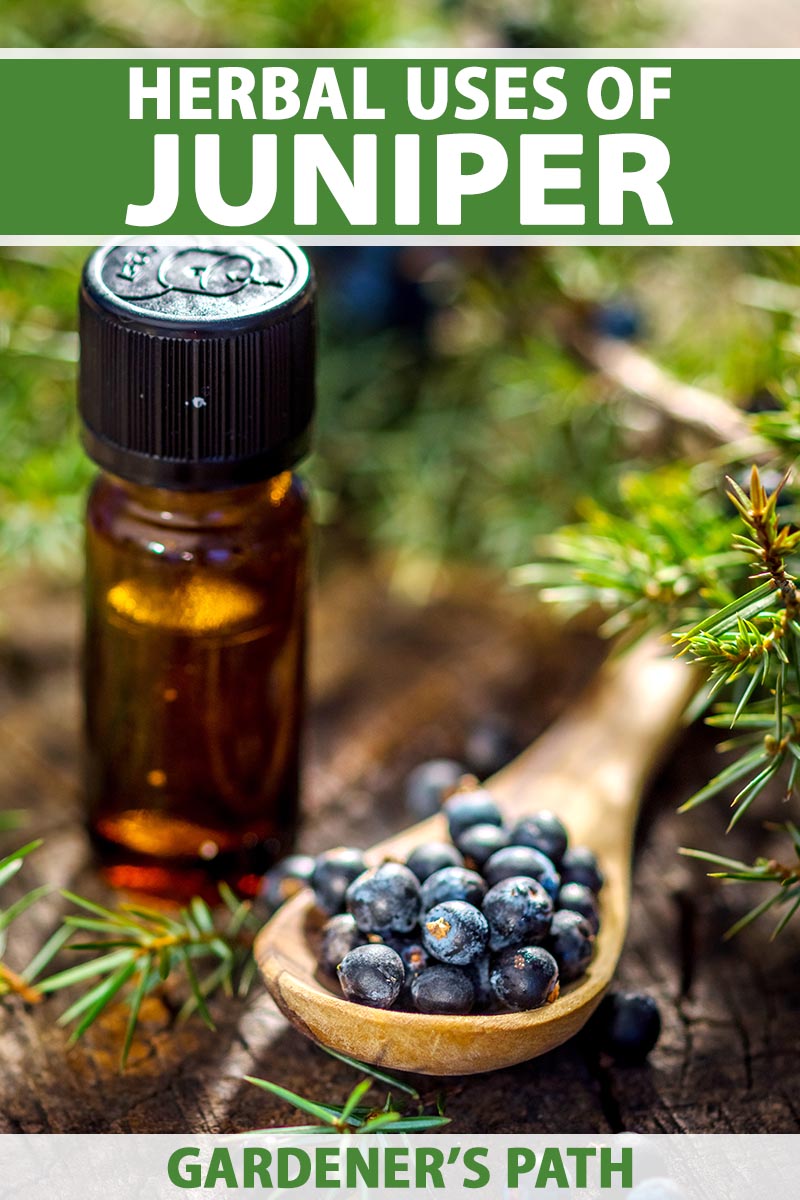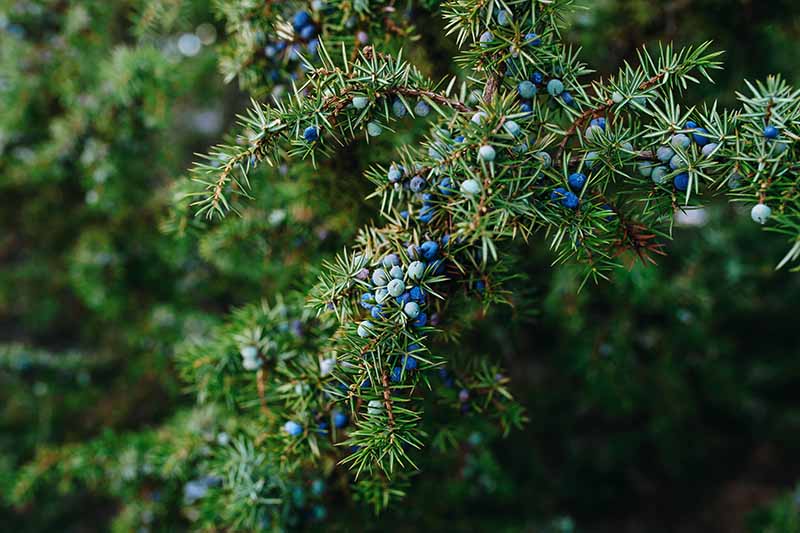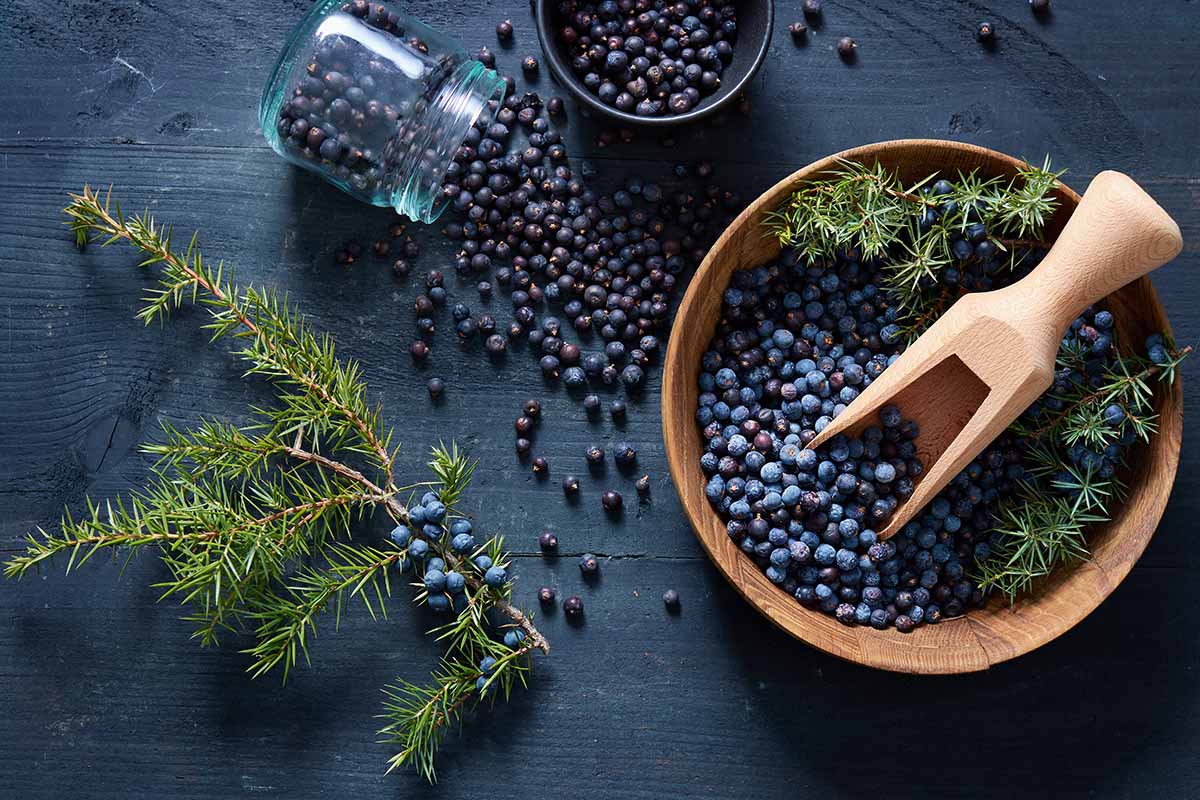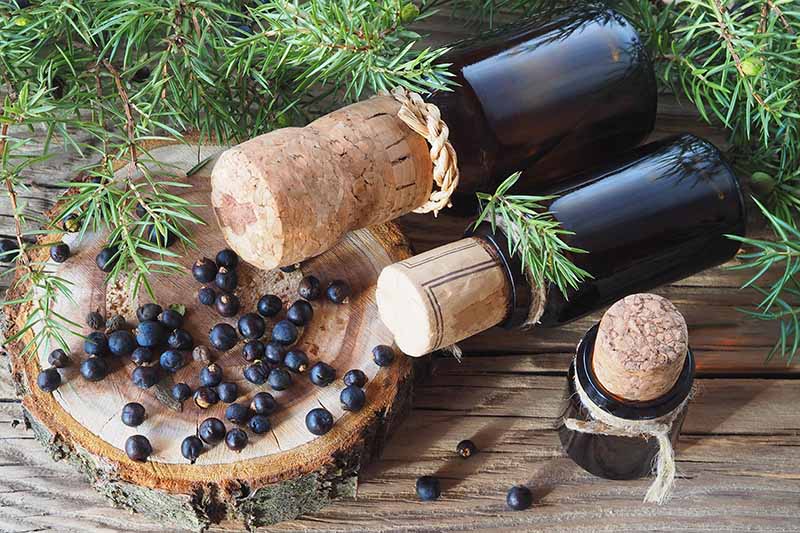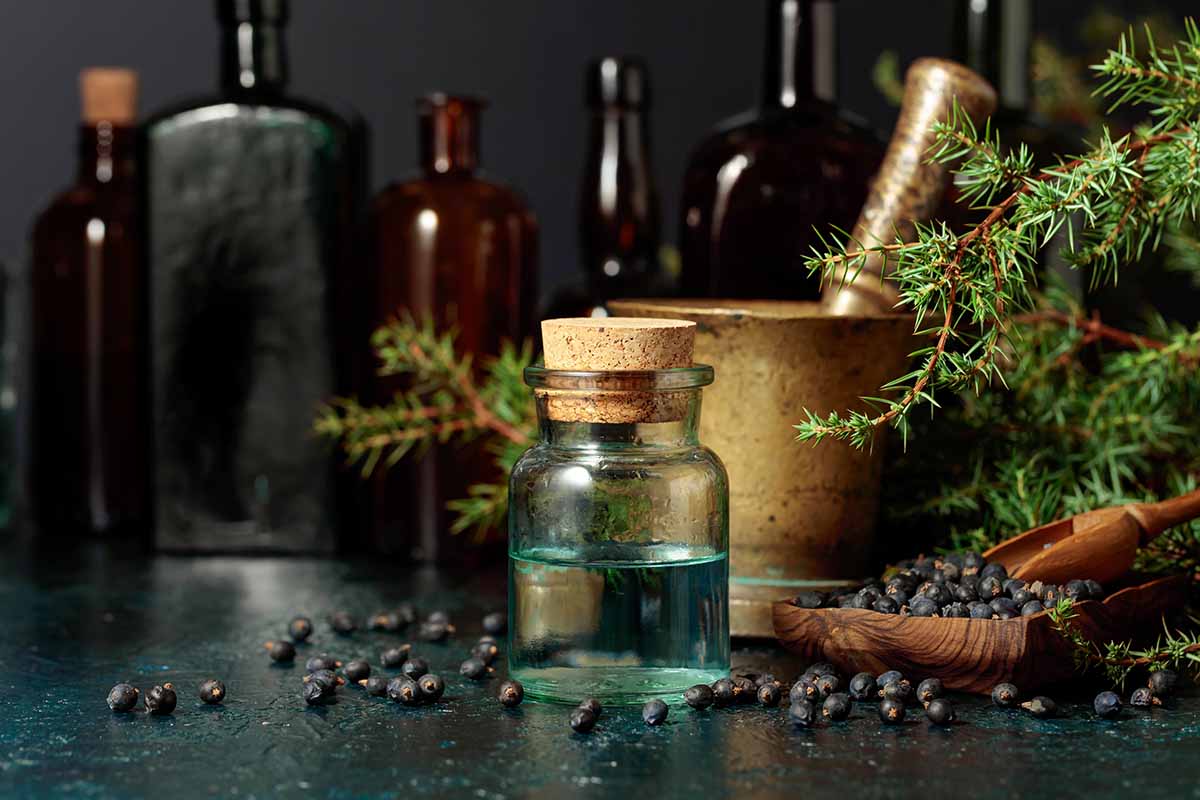It’s difficult to find someone who hasn’t heard of echinacea. But it’s pretty uncommon to find someone who knows the medicinal value of juniper. That’s a shame because these ubiquitous shrubs grow all across the Northern Hemisphere, so you can likely forage them in your own backyard. Many plants in the Juniperus genus have many uses, both topical and internal, not to mention their value as ornamentals and native plant species. We link to vendors to help you find relevant products. If you buy from one of our links, we may earn a commission.
History
Junipers have been used as food and medicine for a long, long time. Wherever junipers grow – and in some places where they don’t – humans have used them as food and medicine. We don’t know exactly what they used them for, but they were important enough that ancient Egyptian tombs – including King Tutankhamun’s – have been found to have juniper berries in them. They certainly used the berries as a treatment for tapeworms, though we don’t know much more for certain. Ancient Romans used the dried berries in place of peppercorns. Ancient Greeks thought the fruits improved physical stamina, and they were even used by Olympians to help them best their competitors. Do you love a good old gin and tonic? Gin was invented by the Dutch as a medicine in 1650. Franciscus de la Boe, a Dutch physician at the University of Leiden, wanted to find a way to treat kidney issues, so he looked to juniper. The rest, as they say, is history. Native people in North America used juniper extensively, and many still do today. For instance, Apache tribes used various species to relieve seizures, for colds and coughs, and to aid in childbirth. Cree people used it to lower a fever, to ease lung infections and toothaches, and to relieve kidney troubles. Inupiat people believed a ripe berry a day could keep colds and flu away. The Delaware, Cree, Cheyenne, Paiute, and Nlaka’pamux used it in various ways as a gynecological aid, often to loosen the muscles to promote childbirth, or to prevent it in the first place. Various native people used the plants for things like a treatment for “insanity,” hangovers, stomach pain, heartburn, sexually transmitted infections, headaches, wounds in the skin, ulcers, burns, fainting, menstrual pain, vertigo, and even as a love charm or a sedative. People living in Baltic countries burned the plant to ward off evil, drought, and other things that could plague their crops. In other parts of Europe, it was used as an anti-inflammatory to treat gout, arthritis, and migraines.
Best Species for Herbal Applications
Juniperus communis is by far the most studied, most available commercially, and most commonly used species, both as food and herbally. It’s also the most common species found growing wild in North America and Europe. But there are many species that you can use medicinally. California (J. californica), creeping (J. horizontalis), one-seed (J. monosperma), western (J. occidentalis), Utah (J. osteosperma), Pinchot’s (J. pinchotii), Rocky Mountain (J. scopulorum), Eastern red cedar (J. virginiana), and southern red cedars (J. virginiana var. silicicola) have all been used herbally.
Medicinal Uses
The use of juniper as medicine hasn’t been studied extensively in humans, so we don’t know for sure all that it is capable of. That said, the European Pharmacopoeia and the official pharmacopeia of Austria and Switzerland recognize the essential oil of J. communis as a treatment for certain bacterial and fungal issues, as well for easing the symptoms of a cold. What we do know is that juniper has a lot of good stuff packed into those tiny cones. Each berry has sugars, resins, catechins, organic and terpenic acids, leucoanthocyanidin, alkaloids, flavonoids, tannins, gums, and lignins. Many cultures have used the cones and leaves to treat kidney issues and as a diuretic, and there seem to be good reasons for that. The plant contains terpenes, flavonoid glycosides, sugar, tannins, tar, and resin, and terpinen-4-ol, all of which combine to have a diuretic effect. Juniper is also widely advertised on the internet and in health food stores as a digestive to reduce gas, and to stimulate (or reduce) the appetite. You might also see it advertised online or at stores that carry supplements as a treatment for insomnia and anxiety. There hasn’t been a ton of research done on its efficacy, but one study by Eric Yarnell, a professor in the Department of Botanical Medicine at Bastyr University, found that it didn’t seem to have a better result than that of a placebo. Juniper has been studied for its antibacterial properties, and it shows promise as an antibacterial agent, thanks to hydrocompounds like α-pinene, which the oil in the cones contain in abundance. It may also have potential use as an antifungal and antioxidant. While the research on this is still in its early stages, it might even have potential as an anti-aging compound, or a treatment for Alzheimer’s or certain types of cancer. Those who used juniper cones historically to control blood sugar levels may have been onto something. Modern research shows that it can decrease blood sugar levels – at least in rats. Native Americans used the cones to prevent pregnancy, and modern tests have found that they can, in fact, reduce fertility or even induce abortion. It may, however, be J. sabina that’s responsible for this effect rather than J. communis. As such, it is important to use all herbal remedies with caution, under the guidance of a knowledgeable practitioner.
Potential Side Effects
WebMD reports that taking juniper over long periods, taking doses of more than 10 grams of the berries, or taking more than 100 milligrams of the oil, is unsafe. It’s also important to note that each individual is different in terms of size, age, and other factors, so any dosage deemed “appropriate” can vary greatly. Too much juniper can cause seizures, stomach irritation, or kidney problems. It can also impact blood pressure and heart rate. Topical applications are generally regarded as safe, but those with allergies might experience blisters or dermatitis. Above all, please remember that these plants are powerful. Alongside the potential to provide certain health benefits, they also have the potential to cause harm.
Preparations
You can extract the oils from the leaves (needles), stems, and berries, but a true essential oil takes a lot of work to produce, and special equipment. Instead, you can make an extract by combining the berries and some distilled alcohol like vodka. To do this, mix a quarter-cup of juniper berries with a cup of vodka and seal in a jar. Place the mixture in a dark, cool spot like a cupboard for at least two weeks, or preferably two months. The longer you wait, the stronger the mixture will be. You need to gently shake the mixture every day to prevent mold from forming. Once it is ready, strain the mixture. Store the liquid in a jar in a cool, dark place for up to a year, or more, depending on the conditions it’s kept in. Watch for mold and discard it if any develops. Once the mixture loses its pungent scent, it’s time to toss it. To make a topical preparation, combine a cup of blended berries with a cup of shea butter, and an ounce of beeswax. Melt the wax and shea butter and mix all the ingredients together well. If you want to make a more potent mixture, add a half a teaspoon of juniper essential oil. To make a tea, steep a tablespoon of berries (feel free to toss in some needles, too) in a cup of hot water. Allow everything to steep for at least 10 minutes. Strain out the solids and drink up. On that note, I will mention one last time that certain species can be toxic, and all can be mildly poisonous – even edible varieties – if consumed in large doses. Skin contact can result in rashes in some people. Be sure to positively identify any junipers or other plants that you are using to make medicine, and determine dosages that are appropriate for you if applicable with the guidance of a professional. Do you have experience using juniper medicinally? Let us know in the comments section below. And for more information about growing and using juniper, check out these guides next:
How to Grow and Care for Juniper ShrubsAre All Juniper Berries Safe to Eat?13 Juniper Berry Uses in the Kitchen and Beyond
